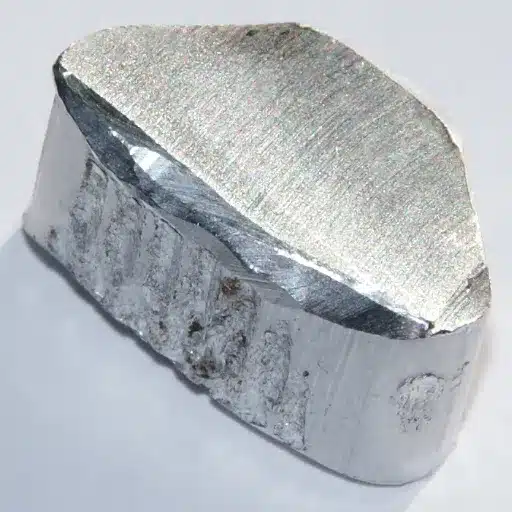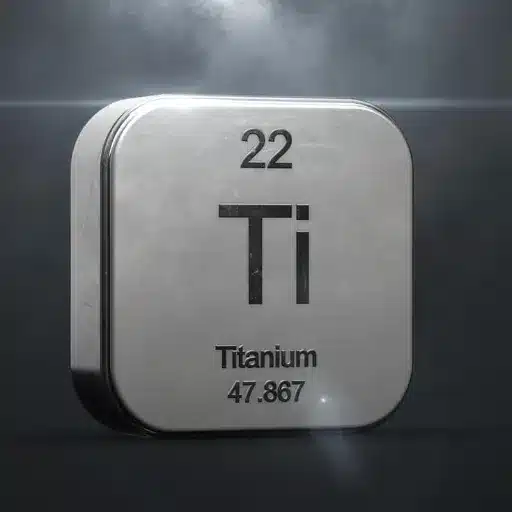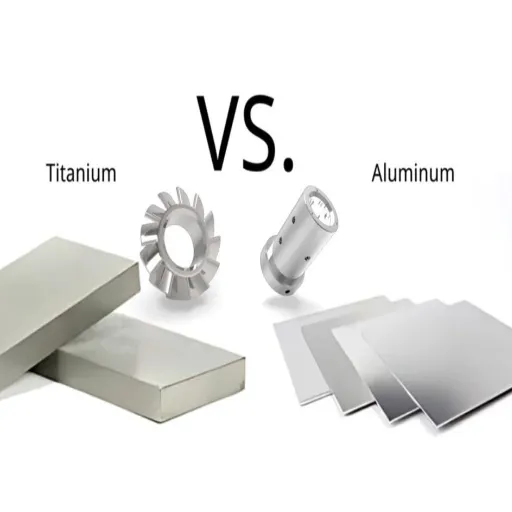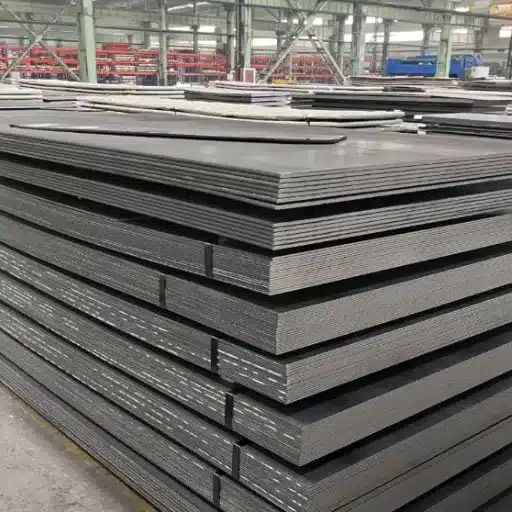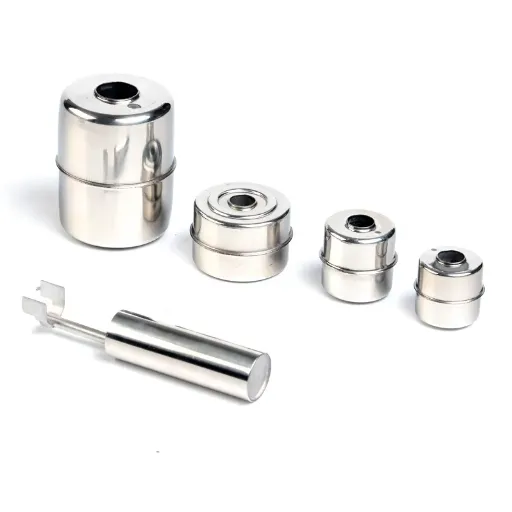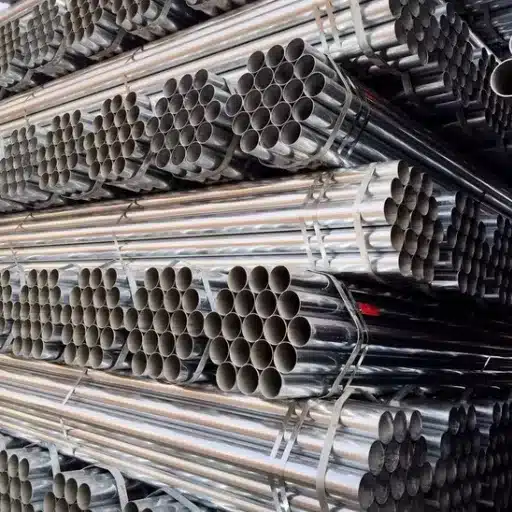The thermal conductivities of various metals being understood clearly is a matter of importance in various industries such as manufacturing, engineering, etc. among others. Considering metals, stainless steel comes first in terms of usage because it offers a rare mix of properties: high tensile strength, resistance to corrosion, and good thermal conductivity.
But what is the situation of stainless steel compared to others in terms of thermal conductivity? This article will cover a large area by bringing to light the idea of conducting stainless steel and many other metals most notably used. At the end of this article, people would have mastered the concept of thermal conductivity, the specific conductivity performance of stainless steel, and the selection of materials depending on the temperature sensitivity of the environment.
Introduction to Thermal Conductivity

Thermal conductivity is a property of a material that determines how well it can conduct heat. The measurement of thermal conductivity involves determining the amount of heat that passes through a material in a specific distance and time in an efficient manner. To demonstrate this, copper and aluminum are the metals that have the highest thermal conductivity, thus they are mostly used in applications where rapid heat transfer is required like in heat exchangers or electrical wiring.
On the other hand, stainless steel has a lower thermal conductivity which limits its use in heat-sensitive areas but at the same time gives it an advantage over the metals with high thermal conductivity in terms of thermal insulation. Knowing the thermal conductivity of a material is very important in choosing the right one according to the industry, engineering, or manufacturing to ensure that the material’s performance and energy efficiency will be at their best.
Definition of Thermal Conductivity
Thermal conductivity, represented by the letter k (or sometimes by λ), is essentially a way to describe how well a given material conducts heat. It gives a quantitative measure of the heat that passes through a specific material per unit of width and per unit of time and in the direction of the temperature gradient.
The mathematical expression:
q = -k × (dT/dx)
Where:
• q = heat flux (W/m²)
• k = thermal conductivity of the substance (W/m·K)
• dT/dx = temperature difference in the direction of heat flow (K/m)
Thermal conductivity values can range dramatically with a change in the material regarded or even its microscopic structure. To illustrate, metals such as copper and silver have remarkably high thermal conductivity values due to the large number of mobile electrons in the metal that help to transfer the heat; thus, the thermal conductivity of copper at room temperature is around 400 W/m·K.
Material Comparison Examples:
- Copper: ~400 W/m·K (excellent conductor)
- Air: ~0.024 W/m·K (excellent insulator)
- Polystyrene foam: Very low conductivity (insulator)
Importance of Thermal Conductivity in Metals
Metals are the go-to materials for a multitude of industries primarily because of their remarkable thermal conductivity that guarantees transfer of heat in critical applications to be done efficiently. Copper and aluminum are the top ones among these melting metals with high thermal conductivity, therefore, being a necessity in the future thermal management systems.
| Metal | Thermal Conductivity (W/m·K) | Common Applications |
|---|---|---|
| Copper | 400 | Electric wires, heat exchangers, printed circuit boards (PCBs) |
| Aluminum | 205 | Car radiators, air-conditioning systems, aircraft parts |
| Stainless Steel | 15-25 | Thermal insulation, controlled heat applications, cookware |
Thermal conductivity is so important that it is considered in the most advanced industries like renewable energies and electronics. The exemplifying case is that efficient solar modules use materials with good thermal conductivity to remove excess heat and keep them performing at the same level.
Factors Affecting Thermal Conductivity
Intrinsic and extrinsic factors have a great impact on thermal conductivity, which is crucial for industrial applications where materials are optimized. The atomic structure and bonding are the main factors that determine the thermal conductivity of a material.
Key Factors Influencing Thermal Conductivity:
- Atomic Structure and Bonding: Metals with free-moving electrons conduct heat better than non-metals like ceramics or polymers where lattice vibrations (phonons) are the only mode of heat transfer.
- Temperature: Thermal conductivity in metals usually decreases at high temperatures due to greater electron scattering, but the opposite is true in insulators.
- Impurities and Defects: Can lower thermal conductivity by scattering phonons or electrons, making the material less effective.
- Material State: Gases usually have lower thermal conductivity compared to solids and liquids due to scarce molecular arrangement.
- Applied Pressure: Can impact thermal conductivity in anisotropic materials.
Thermal Conductivity of Stainless Steel
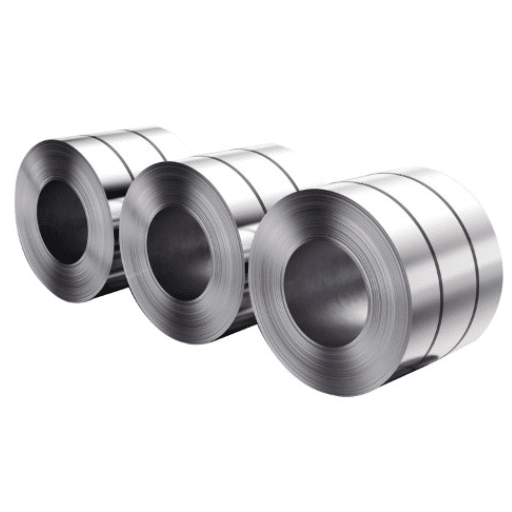
Stainless steel is characterized by its comparatively low thermal conductivity among metals, the conductivity of copper and aluminum being much higher. The thermal conductivity of stainless steel can be found in a range of 10-30 W/m·K according to the particular grade and alloy makeup.
Key Insight: The very low thermal conductivity of stainless steel makes it a perfect candidate for heat transfer resistant applications, such as thermal insulation barriers or cryogenic environments, that cannot afford heat transfer at all. It is also the case in the cooking surfaces or heat exchangers that gradually and controlledly temperature is desired.
Overview of Stainless Steel Composition
Stainless steel is an iron-based alloy that contains chromium as the principal metal and also includes varying amounts of nickel, manganese, carbon and molybdenum as minor components. The main trait that sets stainless steel apart from other metals is its chromium content, which normally makes up 10.5% or more of the whole alloy.
| Alloying Element | Primary Function | Benefits |
|---|---|---|
| Chromium | Forms protective oxide layer | Prevents rusting and oxidation, maintains metal integrity |
| Nickel | Enhances ductility and toughness | Improves formability and extreme temperature resistance |
| Molybdenum | Increases pitting resistance | Enhanced performance in chloride-rich environments (Grade 316) |
| Manganese & Carbon | Structural support | Contributes to overall strength and workability |
Thermal Conductivity Values of Grade 304
Thermal conductivity of the 304 stainless steel grade is around 16.2 W/(m·K) at 100 degrees Celsius according to standard technical data. Although this is relatively low compared to other metals, e.g., aluminum, it is thus considered suitable for heat resistance and stability applications over a wide temperature range.
Major Applications: Heat exchangers, industrial piping, and cookware applications are among the major areas where these traits characterize the material. Additionally, the understanding and optimization of thermal conductivity are absolutely necessary in areas where very accurate temperature management is needed, for instance, in the energy or aerospace industries.
Comparison of Thermal Conductivity in Different Stainless Steel Grades
Thermal conductivity, a vital property in the field of materials science, is one of the factors that varies the most among the different grades of stainless steel.
| Stainless Steel Grade | Type | Thermal Conductivity (W/m·K) | Microstructure | Key Characteristics |
|---|---|---|---|---|
| 304 | Austenitic | ~16 | Face-centered cubic (FCC) | Obstructs heat transfer, versatile applications |
| 316 | Austenitic | ~15 | Face-centered cubic (FCC) | Contains molybdenum, superior corrosion resistance |
| 430 | Ferritic | ~24 | Body-centered cubic (BCC) | Better heat flow, higher thermal conductivity |
| Duplex | Austenitic-Ferritic | ~18-22 | Mixed structure | Intermediate conductivity, high strength and corrosion resistance |
Duplex stainless steels which consist of both austenitic and ferritic microstructures provide intermediate thermal conductivity values along with high mechanical strength and corrosion resistance. These attributes render duplex grades very useful for applications in high performance heat exchangers and desalination processes.
Comparison of Thermal Conductivity: Stainless Steel vs Other Metals
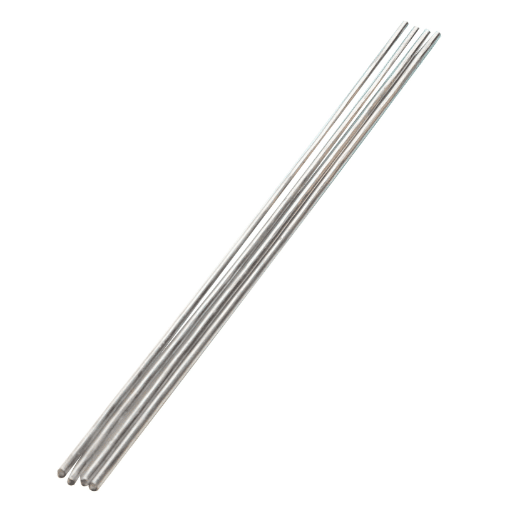
Stainless steel is a very versatile material in many industries, but if we compare it with other types of metals, it does not have very good thermal conductivity.
| Metal | Thermal Conductivity (W/m·K) | Advantages | Best Applications |
|---|---|---|---|
| Copper | ~400 | Excellent heat conduction, high efficiency | Electrical wiring, heat exchangers, thermal management |
| Aluminum | 200-250 | Good conductivity, lightweight, easy to machine | Radiators, heat sinks, HVAC systems |
| Stainless Steel (304/316) | 15-25 | Corrosion resistance, mechanical durability, high-temp strength | Chemical processing, aerospace, harsh environments |
| Carbon Steel | 50-60 | Higher than stainless, cost-effective, strong | Structural applications, machinery |
Thermal Conductivity of Aluminum vs Stainless Steel
Thermal conductivity is one of the major factors that characterize a material for its hot applications. It is very hard for heat not to pass through aluminum as it has very good conductivity with about 205 W/m·K at room temperature. Thus, it is mainly used in heat exchangers, radiators, and other applications where highly efficient heat transfer is a must.
Aluminum vs Stainless Steel Comparison:
- Aluminum: ~205 W/m·K – Excellent for rapid heat transfer
- Stainless Steel: 14-16 W/m·K – Better for thermal insulation or controlled heat dissipation
The selection of material between aluminum and stainless steel should still be based on several properties besides thermal conductivity. Resistance to corrosion, durability, and mechanical strength are the other major factors that play a big role too. Stainless steel provides better resistance to oxidation and corrosion, thus it can be used in harsh environments that are or might be exposed to chemicals and moisture.
Thermal Conductivity of Copper vs Stainless Steel
Thermal conductivity of copper is at least 20 times greater than that of stainless steel. That is why the thermal conductivity of copper is about 400 W/m·K (watts per meter-kelvin), and therefore it is considered the best material available in the market for heat conduction.
Critical Comparison:
- Copper: ~400 W/m·K – Supreme heat conduction
- Stainless Steel: 15-25 W/m·K – Superior strength, corrosion resistance, and durability
This huge gap highlights copper’s supremacy in transferring heat efficiently, and thus it is widely used for heat exchangers, electrical wiring, and cooling systems among other things.
Though, these two materials are not completely interchangeable as their usage really depends on the application. Stainless steel, despite its heat conducting inefficiencies, brings along advantages such as being stronger, more corrosion resistant, and lasting longer even in the most difficult conditions.
Other Metals and Alloys Compared to Stainless Steel
| Material | Key Advantages | Limitations | Comparison to Stainless Steel |
|---|---|---|---|
| Aluminum | Lightweight, high corrosion resistance | Lower tensile strength | Not suitable for heavy-duty applications |
| Titanium | Superior strength-to-weight ratio, extreme temp resistance | Significantly higher cost | Used in aerospace and biomedical where cost justified |
| Nickel Alloys (Inconel) | Exceptional high-temp and corrosion durability | Very expensive, may be over-engineered | Better performance but at premium cost |
| Carbon Steel | Cost advantage, enhanced strength and hardness | More susceptible to rust without coating | Requires protective treatment for durability |
Specific Heat and Thermal Conductivity in Stainless Steel
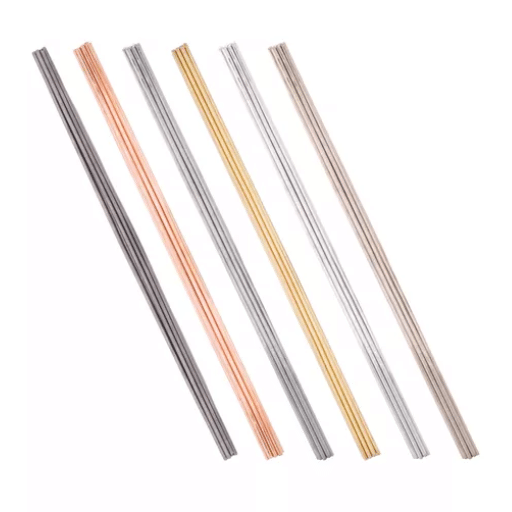
The unique properties of stainless steel as a material make it suitable to be used in thermal management applications of different kinds. One such property is the specific heat capacity (expressed in J/kg·K), which reveals how much heat energy has to be supplied to a unit mass of the material for its temperature to rise by one degree Kelvin.
Thermal Properties of Stainless Steel:
- Specific Heat Capacity: 450-500 J/kg·K (moderate range)
- Thermal Conductivity: 15-25 W/m·K (significantly lower than copper/aluminum)
- Advantage: Easily manages heating and cooling, beneficial for temperature-controlled environments
Understanding Specific Heat in Metals
The specific heat in metals is a crucial thermal property that quantitative the amount of heat required to be added to the material to make its temperature rise one degree Celsius per unit of mass. This property has a close connection with the atomic structure and bonding of a metal, and this connection eventually leads to the metal’s ability to either store or transfer thermal energy.
For instance, copper and aluminum have very low specific heat values owing to their compact atomic arrangement and also to the role played by the free electrons in thermal conduction, thus the two metals are highly efficient in heat transfer and are widely used in heat transfer applications.
Relationship Between Specific Heat and Thermal Conductivity
The connection of specific heat and thermal conductivity is a pivotal element in material thermal performance assessment. Although these properties differ, they are linked through the thermal diffusivity equation:
Thermal Diffusivity Equation:
α = k / (ρ × c)
Where:
• α = thermal diffusivity
• k = thermal conductivity
• ρ = density of the material
• c = specific heat capacity
Implications for Engineering and Design
The combination of materials with remarkable thermal management properties has seriously affected the engineering and design processes over different sectors. State-of-the-art computer simulation and material science research have together brought about the production of machine parts that not only efficiently get rid of heat but also increase the reliability and lifespan of the system.
- Electronic Circuits: High-density designs require materials with excellent thermal conductivity to eliminate thermal necks and ensure perfect performance during heavy use.
- Renewable Energy: Photo-voltaic systems benefit from materials with special thermal properties to maintain optimal temperature and increase energy output.
- Manufacturing Sector: Data-driven and precision-engineered solutions match material performance with heat requirements.
Fabrication and Application of Stainless Steel
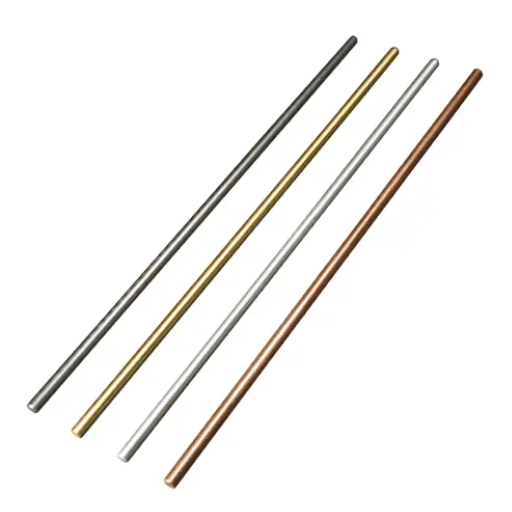
Fabrication Details
| Fabrication Process | Techniques | Benefits |
|---|---|---|
| Cutting and Machining | Laser cutting, water jet cutting, plasma cutting | Precision engineering, minimal material deformation, high precision |
| Forming | Cold forming (bending, rolling, drawing) | Shapes material while improving mechanical properties through work hardening |
| Welding | TIG (Tungsten Inert Gas), MIG (Metal Inert Gas), laser welding | Strong joints with special filler materials, corrosion-free welds |
| Surface Finishing | Polishing, passivation, electroplating | Enhanced corrosion resistance, beautiful surface appearance |
| Heat Treatment | Annealing, solution treating | Refines microstructure, reduces residual stresses, increases ductility |
Applications of Stainless Steel
Industry Applications:
- Construction and Architecture: Structures, facades, roofs – attractive look and rust resistance
- Medical Devices: Surgical instruments, orthodontic devices, implants – bio-compatibility and non-reactive properties
- Automotive and Aerospace: Exhaust systems, fuel tanks, landing gears – strength-to-weight ratio, heat and cold resistance
- Food and Beverage Processing: Storage tanks, pipelines, kitchen equipment – hygienic nature, easy to clean
- Energy and Power Generation: Nuclear reactor parts, solar power systems, offshore oil drilling platforms – durability in harsh environments
Impact of Thermal Conductivity on Fabrication Processes
The efficiency and accuracy of fabrication processes are greatly affected by thermal conductivity, and this is especially true in stainless steel industries. High heat-conducting materials, like stainless steel alloys, allow very rapid heat distribution during welding, cutting, and forming among others.
Benefits of Good Thermal Management:
- Reduces local overheating and thermal distortion
- Maintains dimensional accuracy of final products
- Prevents welding defects such as warping or cracking
- Produces stronger and more reliable joints
- Lower energy usage during high-temperature operations
- Longer warranty for tooling equipment
Applications of Stainless Steel with High Thermal Conductivity
Heat Exchangers
The greater thermal conductivity of stainless steel is one of the reasons it is used as the main material for heat exchangers in power generation, chemical manufacturing, and cooling systems. The performance of the heat that is transferred through the materials, in addition to the reduction of energy losses, is directly related to the heat exchanger’s material. Among other things, stainless steel grades such as 316L are routinely employed in heat exchangers due to their high durability against corrosion and the increased heat transfer efficiency.
Cookware and Food Processing Equipment
One of the major advantages drawn from the use of stainless steel in cookware is the high thermal conductivity, which allows for even heat distribution and thus prevents the formation of hotspots while improving cooking results. Moreover, stainless steel finds great application in the food processing sector where the abilities of quick heating and sanitation are required.
Automotive Exhaust Systems
High-temperature versions of exhaust systems in cars require the use of stainless steel, which has a high thermal conductivity, in order to cope with the extreme temperatures fluctuations that are encountered. The quick capture of heat from the critical parts causes cooling of the parts and subsequently the growing of the system life. Besides that, stainless steel with high thermal characteristics helps recovery of heat by exhaust gas temperature controlling.
Electronics Cooling Systems
The modern electronics such as semiconductors and LED systems demand materials which have super thermal management properties. The high-thermal-conductivity stainless steel is used in cooling parts like heatsinks and thermal interfaces. These materials are responsible for the elimination of surplus heat, leading to increased device reliability and performance especially in high power applications.
Industrial Molds and Tooling
Increased thermal conductivity in stainless steel tools and molds, the manufacturing of plastics and metal casting are optimized. The improved heat transfer rate results in a reduction of cooling times as well as enhancement of cycle efficiency.
Future Trends in Stainless Steel Development
The development of stainless steel is expected to be increasingly integrated with the latest technologies and opportunities of sustainability, thanks to the need for more material-efficient and less polluting overwriting.
Nanotechnology Integration
One of the most notable trends is the use of nanotechnology to modify the microstructure of stainless steel that results in the enhancement of its properties like corrosion resistance, hardness, and strength. In such a way these innovations have opened up to potential applications in medical devices, aerospace components, and renewable energy systems among others.
Artificial Intelligence and Machine Learning
Another important development is the application of Artificial Intelligence (AI) and Machine Learning (ML) to the metallurgical optimization of alloys and production methods. Harnessing huge datasets and predictive algorithms, manufacturers can precisely customize stainless steel grades to the functional requirements of their customers thus the waste of material and the consumption of energy are both minimized.
Sustainability Focus
Alongside the aspect of sustainability, attention is also drawn to the future of stainless steel. The researchers are looking for ways of making stainless steel products easier to recycle without releasing carbon dioxide that is linked to production processes.
Green Production Methods:
- Advanced melting processes
- Adoption of hydrogen as a reducing agent
- Green alternatives to lessen environmental harm
- Enhanced recycling capabilities
Hybrid Material Systems
Last but not least, the pairing of stainless steel with other cutting-edge materials in hybrid systems is becoming trendy. To illustrate, stainless steel can be used together with high-performance composites to produce lighter but strong materials that are suitable for electric cars and the transportation systems of the future. Thus, with these directions and technologies defining the evolution path, stainless steel remains to change along with other materials in a sustainable and technologically advanced industrial environment.
References
-
Thermal Conductivity Table – Georgia State University
Provides a comprehensive table of thermal conductivity values for various materials, including stainless steel.
Visit the site -
High-Temperature Characteristics of Stainless Steel – Stanford University
Discusses the physical properties of stainless steel, including thermal conductivity, with a focus on high-temperature applications.
Visit the site -
Thermal Conductivity of Irons and Steels – NIST (National Institute of Standards and Technology)
A detailed study measuring the thermal conductivity of various irons and steels, including high-alloy stainless steels.
Visit the site
Frequently Asked Questions (FAQ)
What are the thermal conductivities of stainless steel?
Thermal conductivities of the different types of stainless steel and their compositions affect the thermal properties of the stainless steel. For example, 316 stainless steel has a thermal conductivity of about 15 watts per kelvin per meter. It is a moderate conductor of heat and is, therefore, suitable for use in situations where heat resistant properties are needed.
How the thermal conductivity of stainless steel is compared to that of other metals?
Stainless steel usually has a lower thermal conductivity than copper and aluminum, which have excellent thermal conductivities. On the other hand, the thermal conductivities of copper can even go over 400 watts per kelvin per meter, while the stainless steel gets only a tiny fraction of that, making it a very poor conductor when compared to copper.
What are the thermal properties of metals like stainless steel?
The thermal properties of metals such as stainless steel can be defined by three main aspects: conduction of heat, thermal expansion, and resistance to heat flow. The conductivity of stainless steel, even though it is not the best, is accompanied by its other properties as resistance but not surrendered making it suitable for various applications including ovens and conveyors.
How is the thermal conductivity of 316 stainless steel related to that of carbon materials?
The thermal conductivity of carbon materials varies widely with the form in which they exist. Thus, it can be thicker in some forms, but 316 stainless steel is often chosen not only for the reason of its thermal conductivity (around 15 watts per kelvin per meter) but also for its mechanical properties that are close to those of other good thermally conducting materials.
What are the stainless steel types suitable for heat transfer?
Stainless steel that has the best thermal transmission properties is austenitic stainless steels like 304 and 316. Because of its good combination of thermal conductivity and corrosion resistance, the mentioned grades are very much suitable for industries where both durability and efficient heat transfer are required.
What does it mean that the thermal conductivity is expressed in watts per kelvin per meter?
The value of thermal conductivity in watts per kelvin per meter tells the speed at which heat passes through the material. To put it simply, a greater value means that the material is a better thermal conductor whereas a lower one means that the material is a thermal insulator which can be very important in the applications where heat resistance is required.
How does the thermal conductivity of stainless steel change with temperature?
Stainless steel thermal conductivity behavior is such that it usually increases with the rise in temperature. Thus, the property is very important for heat-related applications as the transmission of heat within the material and the performance of the material in a high-temperature environment are both significantly affected by the thermal conductivity.
Where is stainless steel used based on its thermal properties?
One of the major applications of stainless steel is the food and beverage industry, where its thermal properties make it very suitable. Its moderate heat conduction and corrosion resistance combine to make it the perfect material for not only staging and exposing structural steel but also for kitchen equipment and industrial machines that require management of heat.
What are the differences between stainless steel and carbon in terms of thermal conductivity?
Stainless steel typically exhibits inferior heat conduction compared to carbon, especially in graphite form. While carbon can attain high thermal conductivities, the stainless steel on the other hand, has combined properties such as strength and corrosion resistance thus becoming the most preferred material in certain applications in the industry.

